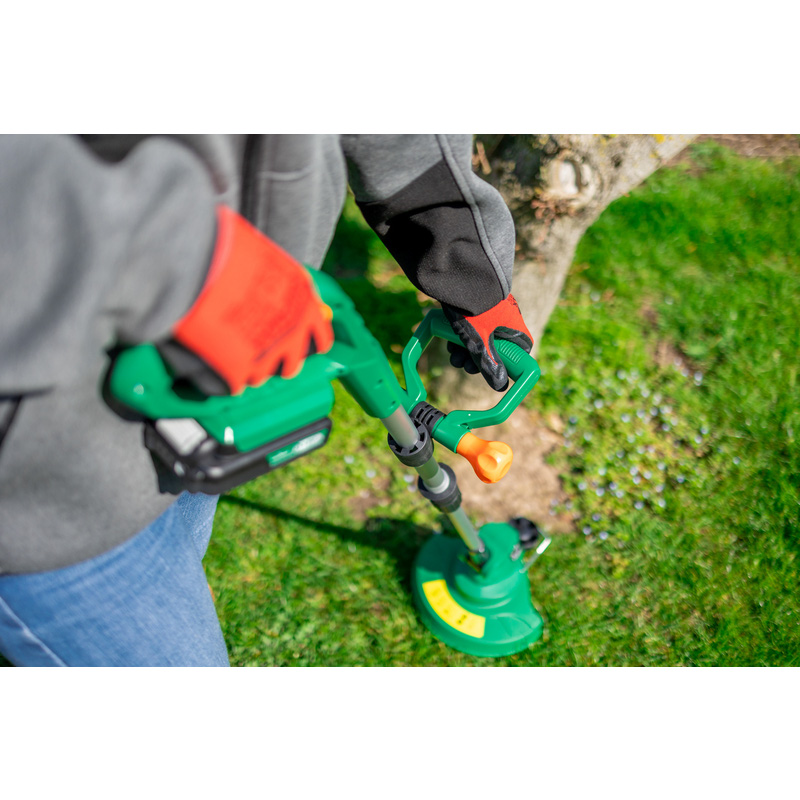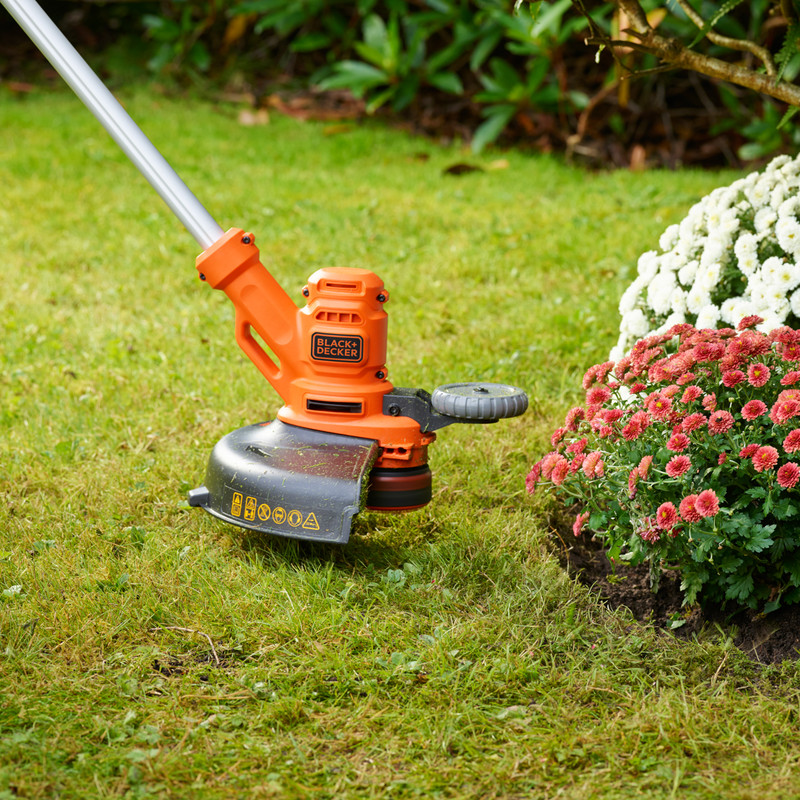If you’ve neglected your landscaping duties during colder months, it could be that your once neat and tidy lawn now resembles the set of a nature documentary, where weeds have been allowed to flourish and grass has grown to waist-height! But don’t feel too dejected, as with the right tools and a bit of time, you can get your garden back to its former glory.
Once you’ve cleared the weeds, scarified your lawn or cut the grass, final touches involve tidying up edges around trees, fencing and along pathways. The best way to trim away those last remnants of grass is by using a grass trimmer, a handy power tool designed to do just that.
But, there are different types of grass trimmers to choose from. These range from cordless trimmers, giving you lots of manoeuvrability, to heavy duty brushcutters, designed to cut through tough vegetation like a hot knife through butter. So, which one should you choose? In this guide we’ll be taking a deep dive into the different garden trimmers, covering how they work and what plant life and greenery they work best on.
How Does A Grass Trimmer Work
While the functionality of all grass trimmers is the same, their cutting methods differ slightly with one type cutting grass with a string and the other with a blade. Let’s look at how each of them works.
Most standard grass trimmers cut grass with a string, this is why they’re sometimes referred to as string trimmers or line trimmers. This string, or cutting line as it’s more commonly known, is fed through the propulsion motor at speed which causes the line to stiffen up to such an extent it can cut through grass. When compared to battery or electric strimmers, those fueled by petrol typically have more power, making them more efficient when cutting through tougher vegetation.
A brush cutter, on the other hand, makes use of a blade and this allows it to cut through much coarser and denser foliage, things like brambles and hedges. The blade is powered by its engine which generates power to drive the shaft causing the blade to rotate at high speed. Brush cutters powered by a 2-stroke or 4-stroke engine are much more powerful than those powered by electric or battery.
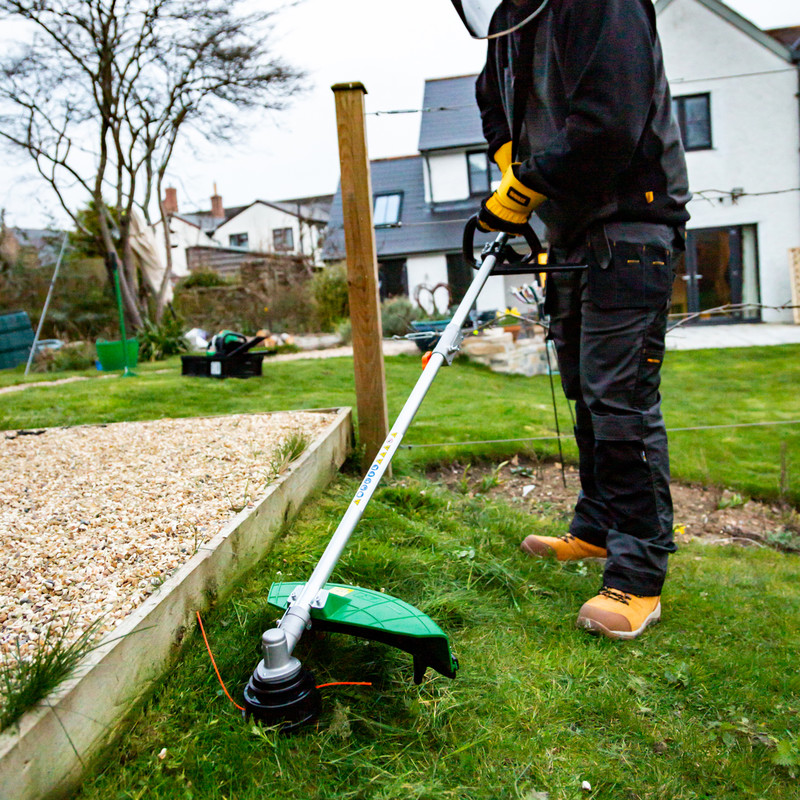
Types of Grass Trimmer
Although using a grass trimmer is relatively straightforward, there are various types available to choose from: corded, cordless, petrol-powered, and brush cutters. Each type provides similar functionality but with slightly different features.
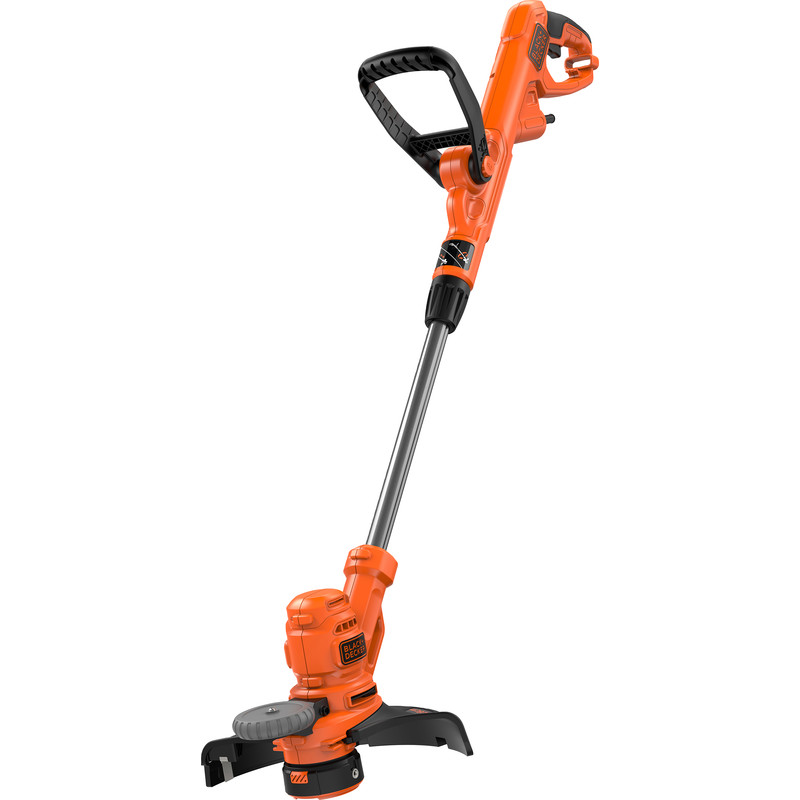
Corded Grass Trimmer
If you don’t want the hassle of recharging a flat battery or refueling an engine, a corded grass trimmer could be the best option. It provides a constant supply of power so you can keep trimming the grass until the job is done!
As there’s no inbuilt battery this keeps the weight down, so you can use this lightweight trimmer for long periods without having to worry about fatigue setting in. This makes it perfect for those of you who have large gardens to maintain. However, keep in mind that as you’ll be somewhat limited by a power cable you may need to make use of an extension lead to improve the reach.
If your garden has a fair few trees or shrubs dotted around, the cable can sometimes make it a little tricky to navigate around them, not to mention that the cord could pose a tripping hazard if you’re not careful. That said, when compared to cordless trimmers, they typically have a higher power output so can be better at trimming away denser vegetation.
Benefits
-
Constant supply of power
-
Lightweight so can be used for long periods of time
-
More powerful compared to cordless trimmers
Things to Consider
-
Limited reach as tethered by power cable
-
Power cord could pose a tripping hazard
-
More difficult to manoeuvre around shrubs and trees
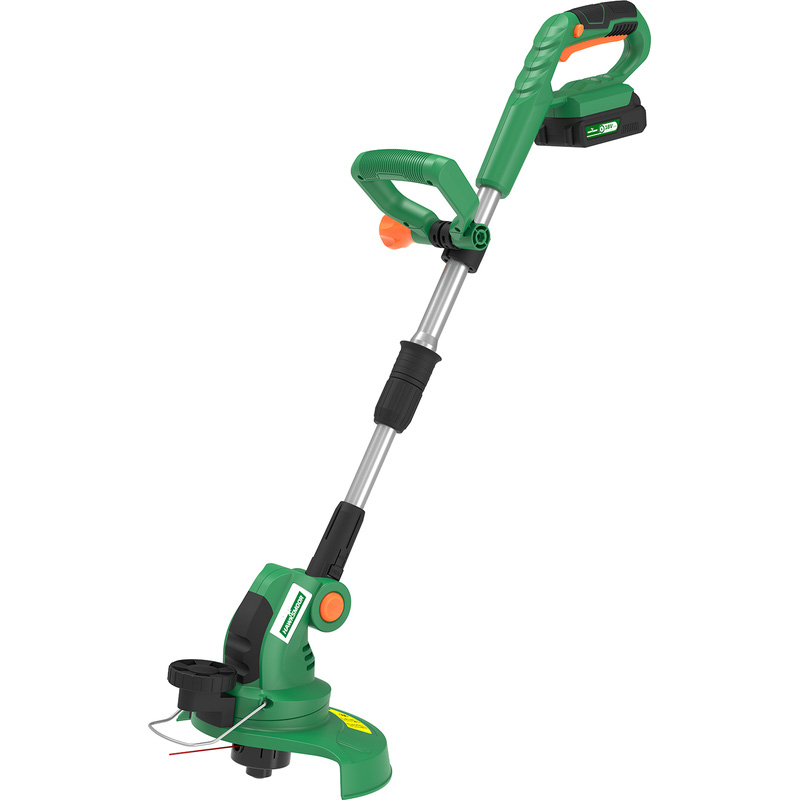
Cordless Grass Trimmer
A cordless grass trimmer is a portable power tool that offers you plenty of freedom of movement when moving around your garden. The inbuilt battery means you’re not bound by a power cord and don’t need to worry about being close to a plug socket. With a fully charged battery, just grab the trimmer and get straight to work.
If you have a smaller garden, you should be able to complete your grass trimming in a single battery charge. However, if your garden is larger, you may need an extra battery on hand or be ready to stop and recharge if the battery runs flat, as their run time is limited.
When compared to electric grass trimmers, cordless models tend to weigh more because of their integrated battery, something to consider if you plan on using your trimmer for extended periods. As with most power tools, grass trimmers can be on the noisy side but cordless trimmers have a quieter operation making them far less disruptive to both you and your neighbours.
Benefits
-
More portable so easy to get around your garden
-
Quiet to operate and less disruptive
-
No power cord required
Things to Consider
-
Heavier so may be more difficult to use for long periods
-
Limited by battery life
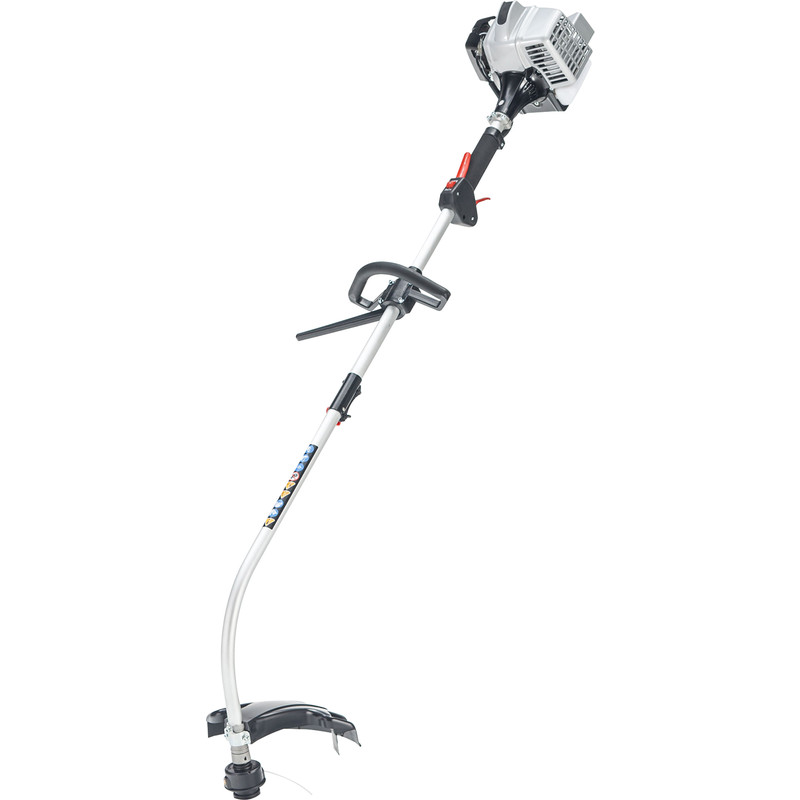
Petrol Grass Trimmer
The higher power output of petrol grass trimmers means they’re much more powerful making them ideal for larger gardens or tougher gardening tasks. They offer plenty of mobility, as they don’t require a power source, and can tackle dense or overgrown areas much easier when compared to cordless or corded varieties.
However, the inbuilt petrol engine can increase the weight quite significantly making it more cumbersome to use and difficult to handle, especially for long periods of time. Their more complex design means you’ll likely need to factor in maintenance costs including the additional expense of fuel, which has to be stored safely.
The need for petrol also means they produce emissions during use which is important to consider if you’d prefer a trimmer that’s more environmentally friendly. That said, their heavy duty design and portability make them a popular choice amongst professional gardeners and landscapers who perhaps need a trimmer with a bit more oomph.
Benefits
-
Better for thicker grass and coarse weeds
-
No power cord to get in the way
Things to Consider
-
Produce emissions during use
-
Larger and heavier compared to other grass trimmer types
-
Ongoing costs to purchase petrol
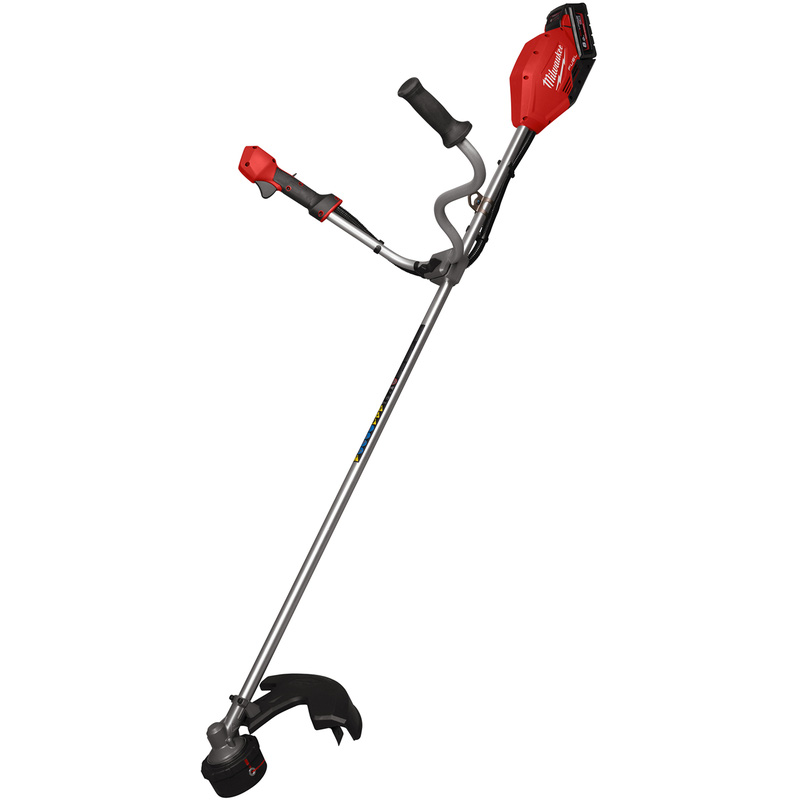
Brush Cutter
While a brush cutter falls within the same category as a grass trimmer, it’s more of a specialist power tool and is specifically designed to handle tougher vegetation when compared to a regular grass trimmer. This makes it ideal for cutting back very overgrown areas, brambles and even small shrubs.
It typically features a more powerful engine and utilises a steel blade for cutting as opposed to string, which allows it to tackle thicker brush and woody plants with ease, so it’s particularly useful for larger, wilder gardens or homes with significant undergrowth.
The main benefit of a brush cutter over a regular trimmer is its ability to work in more challenging environments, which can save you a fair bit of time and effort. While a regular grass trimmer is more user-friendly and suitable for everyday garden maintenance, a brush cutter gives that extra boost of power for heavy-duty work, making it best suited when tackling large, overgrown areas.
Benefits
-
Heavy duty so ideal for shrubs and woody plants
-
Best for very overgrown gardens
Things to Consider
-
Heavy which can make it difficult to handle
-
Require more maintenance compared to a corded or cordless grass trimmer
Things to Consider Before Buying a Grass Trimmer
Power Supply
Consider whether you need a battery-powered, corded, or petrol-powered grass trimmer. Battery models allow for better mobility, whereas corded ones provide unlimited run time, and petrol trimmers are great for large, remote areas.
Size of Your Garden
For smaller gardens, a lightweight grass trimmer with a manageable power output could be ideal. On the other hand, larger gardens or overgrown areas will require more powerful, heavier brush cutters capable of tackling dense vegetation.
What You’ll Be Cutting
Think about the types of plants you'll be trimming, as a brush cutter is better suited for tough, thick weeds and undergrowth. Grass trimmers are designed primarily for cutting softer grass and small plants.
Grass Trimmer Weight
A lighter grass trimmer can be easier to manoeuvre while resulting in less fatigue, ideal for smaller jobs or longer use. Heavier models, while offering more power, can be tiring to use over extended periods.
Power & Performance
If you need consistent power to cut away tougher plants and grass, consider a petrol-powered model. Electric or battery-powered trimmers are quieter and easier to maintain but may be less powerful for more demanding jobs.

